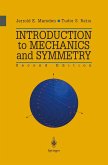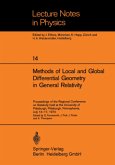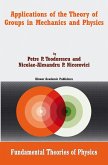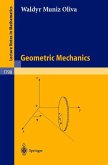"And what is the use," thought Alice, "of a book without pictures or conversations in it?" -Lewis Carroll This book is written for modem undergraduate students - not the ideal stu dents that mathematics professors wish for (and who occasionally grace our campuses), but the students like many the author has taught: talented but ap preciating review and reinforcement of past course work; willing to work hard, but demanding context and motivation for the mathematics they are learning. To suit this audience, the author eschews density of topics and efficiency of presentation in favor of a gentler tone, a coherent story, digressions on mathe maticians, physicists and their notations, simple examples worked out in detail, and reinforcement of the basics. Dense and efficient texts play a crucial role in the education of budding (and budded) mathematicians and physicists. This book does not presume to improve on the classics in that genre. Rather, it aims to provide those classics with alarge new generation of appreciative readers. This text introduces some basic constructs of modern symplectic geometry in the context of an old celestial mechanics problem, the two-body problem. We present the derivation of Kepler's laws of planetary motion from Newton's laws of gravitation, first in the style of an undergraduate physics course, and x Preface then again in the language of symplectic geometry. No previous exposure to symplectic geometry is required: we introduce and illustrate all necessary con structs.
Hinweis: Dieser Artikel kann nur an eine deutsche Lieferadresse ausgeliefert werden.
Hinweis: Dieser Artikel kann nur an eine deutsche Lieferadresse ausgeliefert werden.
"Symmetry in Mechanics is directed to students at the undergraduate level and beyond, and offers a lovely presentation of the subject . . . The first chapter presents a standard derivation of the equations for two-body planetary motion. Kepler's laws are then obtained and the rule of conservation laws is emphasized. . . . Singer uses this example from classical physics throughout the book as a vehicle for explaining the concepts of differential geometry and for illustrating their use. These ideas and techniques will allow the reader to understand advanced texts and research literature in which considerably more difficult problems are treated and solved by identical or related methods. The book contains 122 student exercises, many of which are solved in an appendix. The solutions, especially, are valuable for showing how a mathematician approaches and solves specific problems. Using this presentation, the book removes some of the language barriers that divide the worlds of mathematics and physics." -Physics Today "This is a very interesting book. Those educated in traditional mechanics will acquire [from reading it] knowledge of modern mathematics hidden beyond traditional concepts in the realm of celestial mechanics, [and] . . . pure mathematicians will understand how their discipline enters into practical problems. The author shows how fundamental concepts of symplectic geometry implicitly occur in mechanics . . . the mathematical presentation is ingenious and subtle. There are a lot of exercises for the reader and the solutions of most of them are given in a separate chapter. I can highly recommend this book to undergraduate and PhD students . . . it is ideally suited for teaching a course on the subject." -Mathematical Reviews








